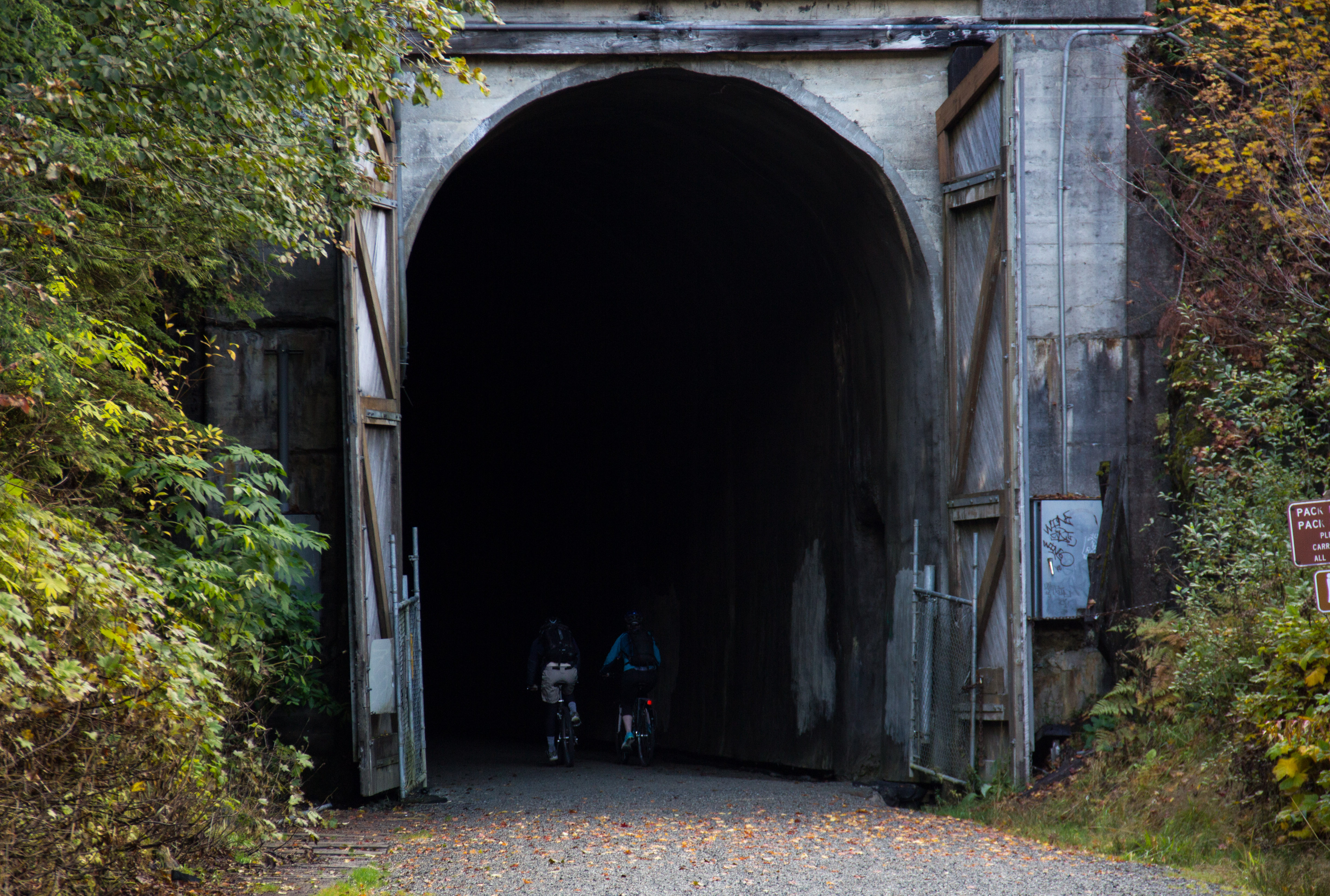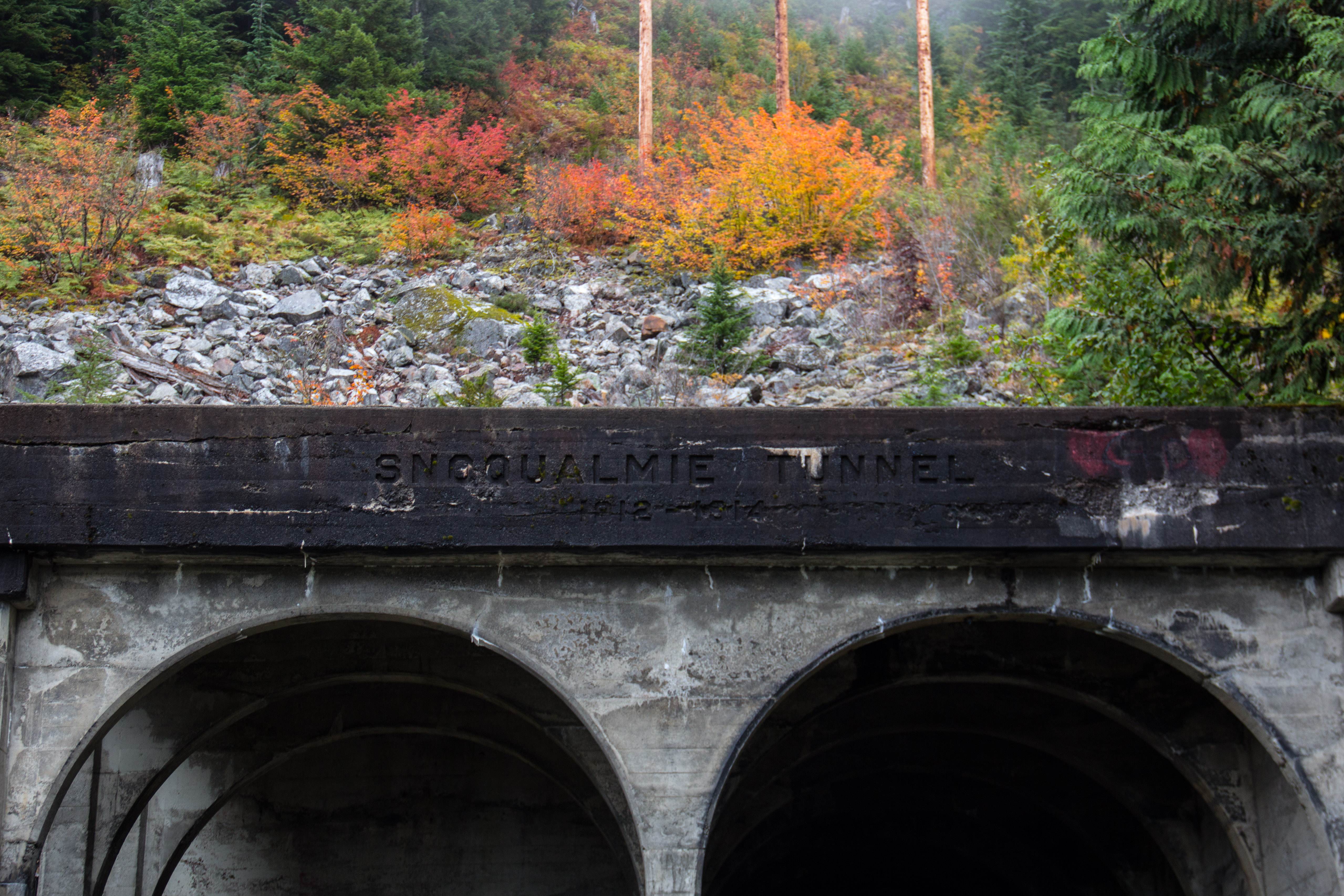Back in the day, my family and I lived in a small, cute suburban home on the outskirts of the Twin Cities area in Minnesota. The neighborhood was nice and safe and we loved to get out and bike around. My brothers and I each had those little Wal-Mart ‘BMX’ fixed gear bikes and we’d often set up piles of dusty garage wares and practice our bunny-hops or see who could get down the alley the fastest. At one point, we even tried the infamous bike swap, which wound up with us all laying in a bleeding, scraped, groaning heap in the middle of the alley, complete with handlebar bruises and torn up jeans. Ah, the good ol’ days.
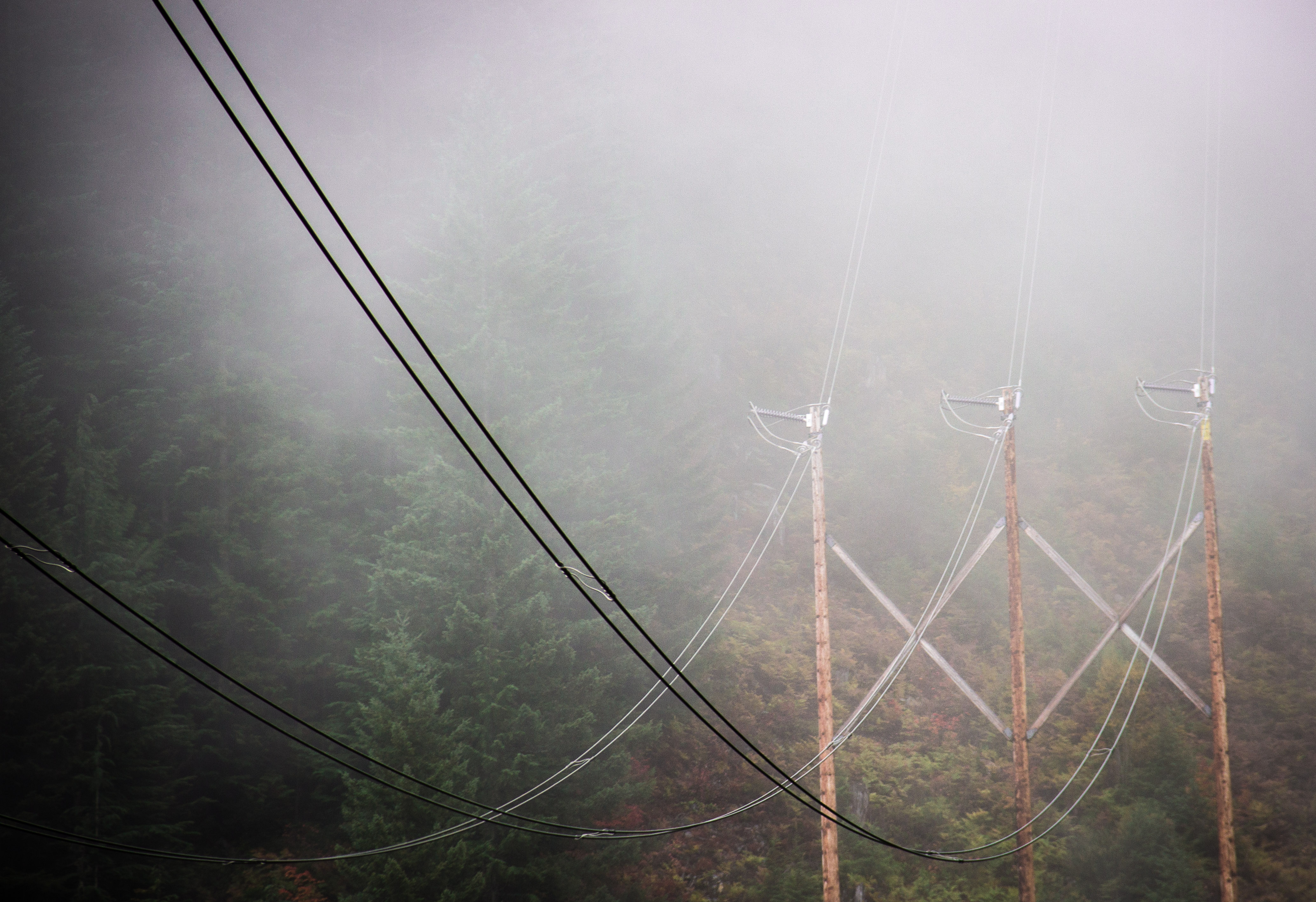
In the morning, low clouds rolled in on our path, making for damp trails and some mysterious looking power posts.
Now, whenever I’m on my bike, the feelings of those days return to me in my mind and in my heart. Biking is still just as fun now as it was then, except now I can go faster… a lot faster. Most of my new homies around campus like biking as well, so naturally, when PSO announced that they were taking a bike day-trip out into the Snoqualmie area on the John Wayne Pioneer Trail, I grabbed my pal Tyler and we signed up ASAP.
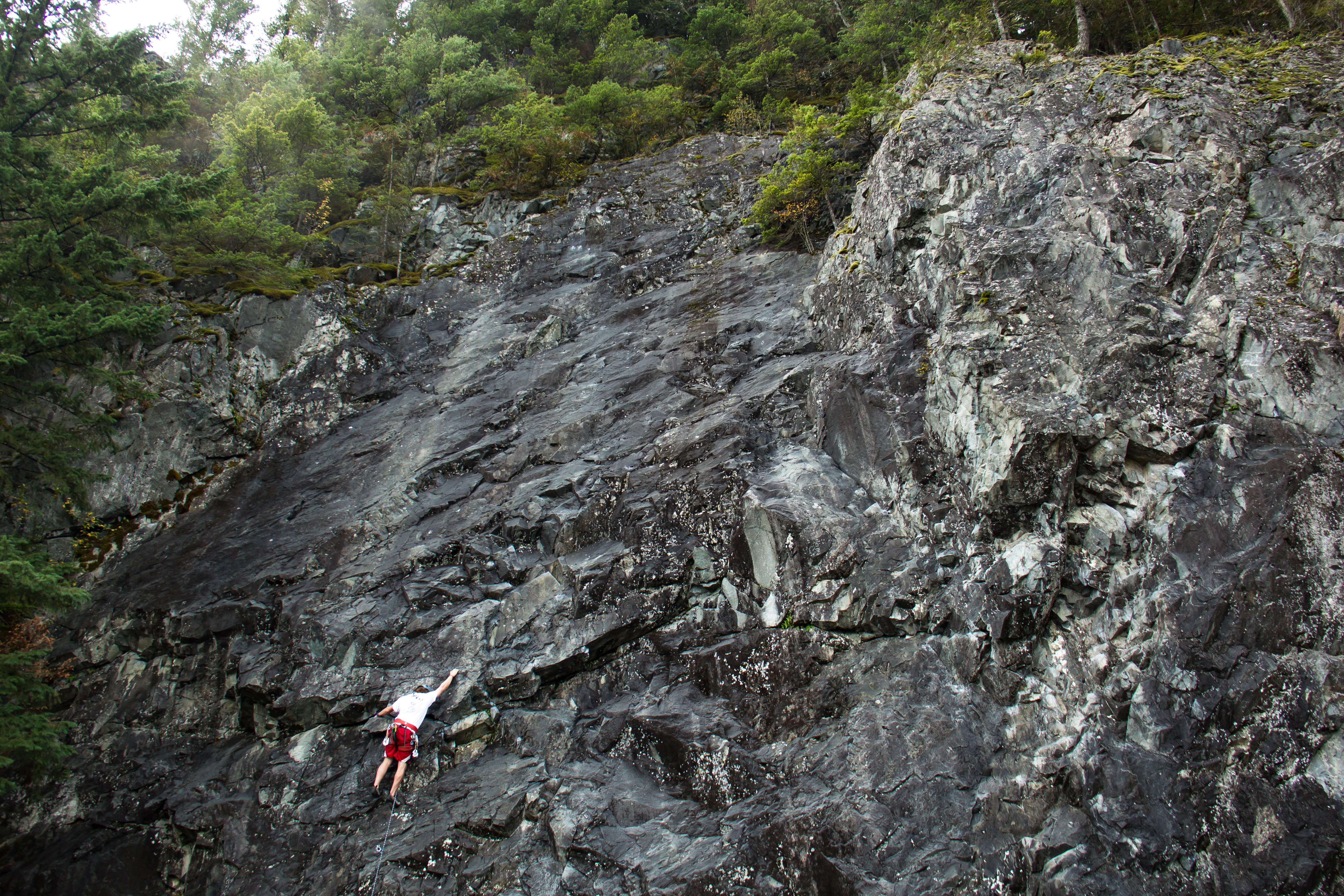
At the turn-around point of our journey, we caught glimpses of a group of climbers ascending a face right off of the bike path.
The section of the John Wayne Trail that we traversed was around 10 miles (we rode the route out and back for a total of around 20 miles) beginning at the Hyak Trailhead. It included many sweeping mountain views, ample fresh air, multiple railroad trellises, and, oh yeah, a two-mile long, unlit, stone tunnel that literally goes through a mountain. Let me just say, it was cold in there. The trailhead was around an hour and fifteen minutes from campus and was nearly empty when we showed up there on that beautiful Saturday morning.
The John Wayne Trail is interesting in and of itself because its surface is a graveled over, two lane path that rests upon what used to be an old railroad grade for the Chicago, Milwaukee, St. Paul & Pacific Railroad until it was converted around the year 1980. Its total length is around 300 miles and it claims to be one of the longest rail-to-trail bike paths in the country.
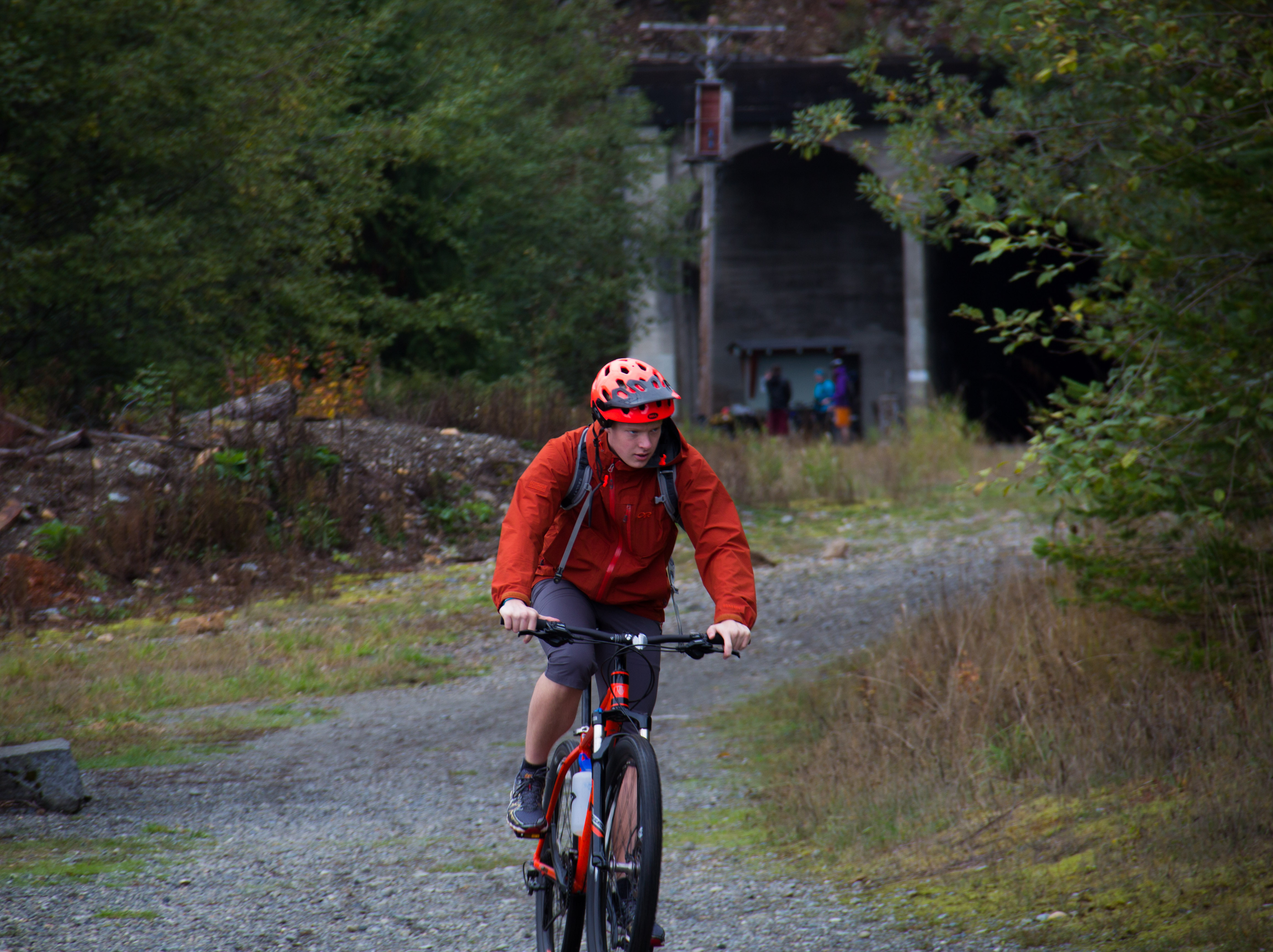
Brock, a fellow Minnesotan, slaying the stone like it’s his day job.
With all of that being said, I would highly recommend the John Wayne for either a day-trip or an extended camping endeavor. Due to the fact that it used to be a railroad grade, the topography changes overall are extremely gradual, in fact, the trail oftentimes feels essentially flat. Remember that if you’re going to leave a car parked at the trailhead you need some sort of paid pass that will ensure you don’t turn a free trip into an expensive one due to the ever-so-unfortunate parking ticket.
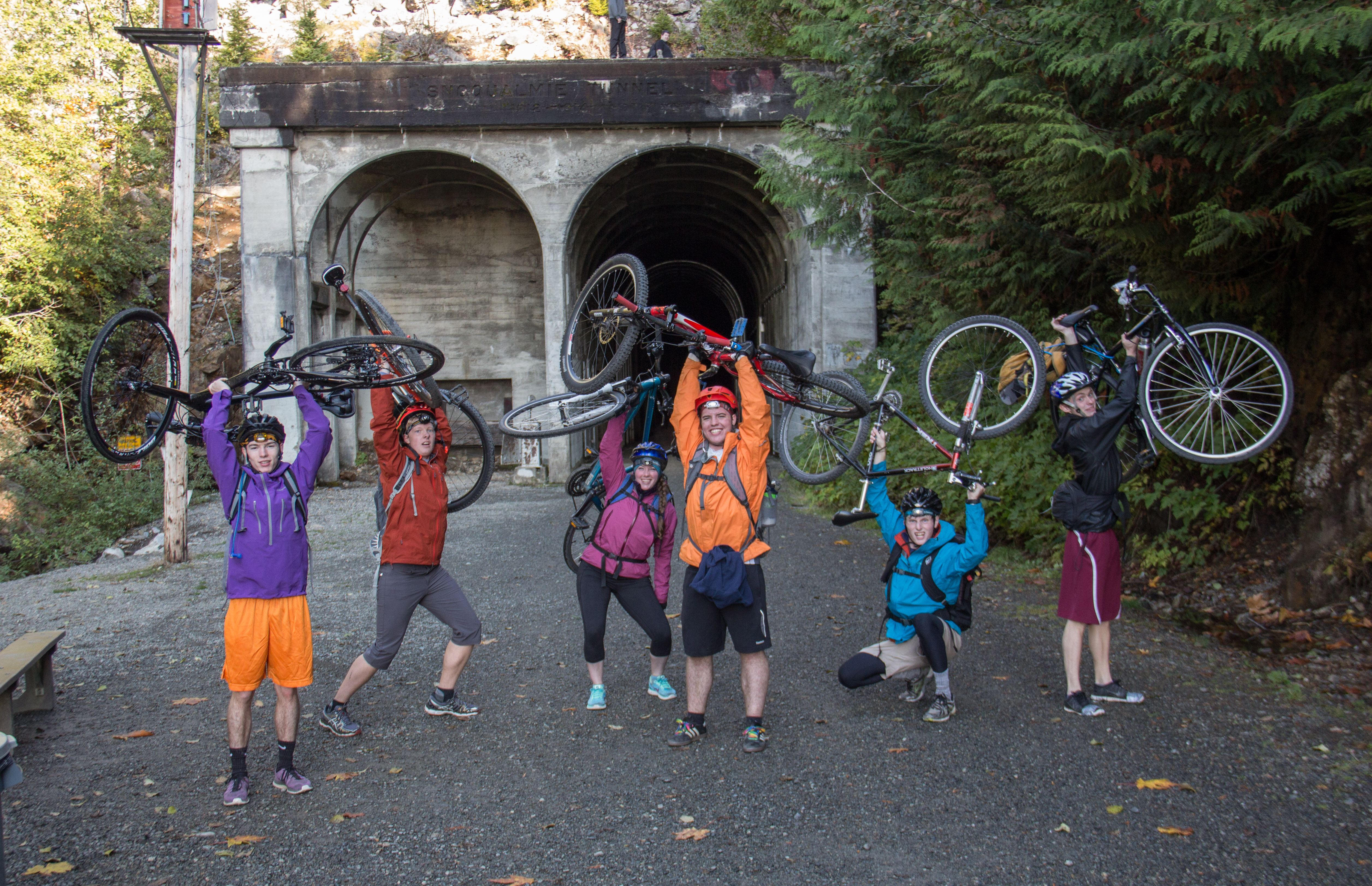
The most natural group photo I’ve ever taken.
So, until next time, make some time to get out and enjoy the glorious fall weather!
& Happy trails,
Colton Born

